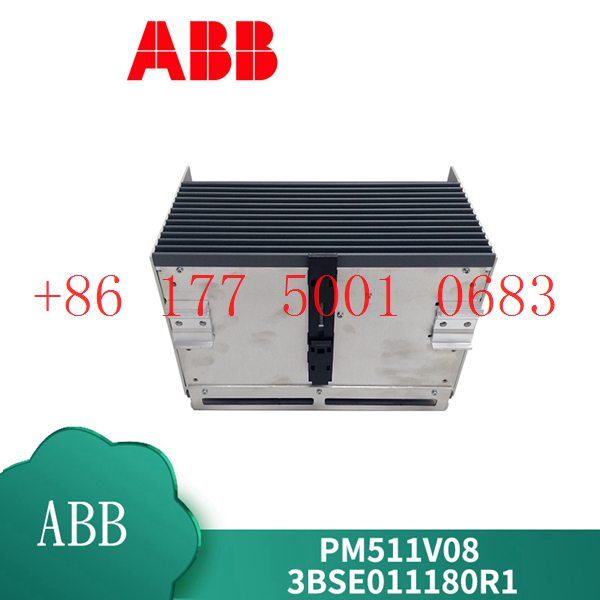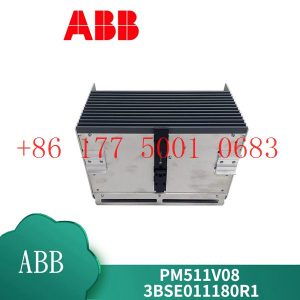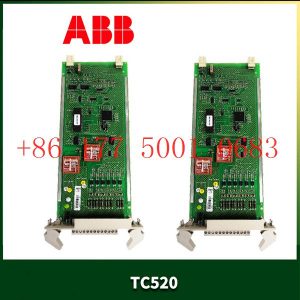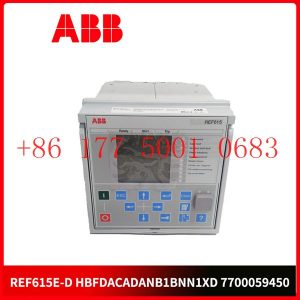Description
hardware flow control. It is an ideal choice in the field of industrial automation.
Design of ABB industrial robot deburring and grinding workstation based on RobotStudio simulation software
introduction
As an official offline programming software for ABB robots, Robotstudio not only has powerful simulation and offline programming functions, but also has automatic path generation
function and simulation monitoring collision function. It can realize the simulation of robots in real scenes, so as to timely update existing robot programs. optimize. On-site teaching
programming will affect normal production activities on site.
The application of Robotstudio software offline programming can reduce on-site teaching and programming time.
As a traditional process of mechanical processing, deburring and grinding have a wide range of applications. However, for a long time, in the process of manual deburring
and polishing, there have been differences in operations between workers. The manual operation is not repeatable and the deburring effect is unstable, which has seriously
affected the surface quality and service life of the finished product; and the working environment There is a large amount of dust floating in the air and the conditions are harsh,
seriously endangering the physical and mental health of workers. With the proposal of “Made in China 2025”, intelligent manufacturing production has become an
important development direction for the transformation and upgrading of the future manufacturing industry. The use of industrial robot automated production lines for repetitive
batch processing operations can not only greatly improve production efficiency, but also greatly improve product quality. Yield and production stability. Therefore, before designing
the robot polishing program, if the shape, size and polishing amount of the workpiece to be polished are known, the robot offline program can be written on the
Robotstudio software according to the existing conditions, thereby improving the efficiency of on-site programming.
1Design task description
This task is to create a new simulation workstation in ABB robot simulation software Robotstudio. The corresponding training equipment in reality is the Yalong
YL-l360A industrial robot deburring and grinding system control and application equipment. The industrial robot selection and method of the simulation workstation are
The grinding head installed on the blue plate refers to the Yalong YL-l360A industrial robot deburring and grinding system control and application equipment, and the
workpiece is customized. The ABB industrial robot deburring and
grinding workstation simulation training process includes: creating a workstation, setting up tools, creating smart components, creating tool coordinate systems,
creating trajectories, programming, simulation design, and verification.
2 Task implementation
2.1 Create a workstation
Import the robot: First, create a new simulation workstation in the Robotstudio software. The workstation name is self-named, and then import the
corresponding industrial robot IRB1410. The robot position remains unchanged by default. Create a robot system, modify the system options, check 709-1D
eviceNetMaster/s1ave, select Chinese as the language, and leave the other options unchanged by default, then click Confirm to create the robot system
After the robot system is created, hide the industrial robot IRB1410 to facilitate subsequent workstation operations.
Import workpiece: The workpiece here is customized, and the corresponding workpiece is selected according to the actual situation on site. This article
uses the original workpiece Curvet in Robotstudio software. After importing it into the workstation, according to the reachable range of the robot, just place the
workpiece at a suitable location within the reachable range of the robot, as shown in Figure 1.
Import the grinding rotor tool: First, create a new grinding rotor tool component – rotor – copy (2) and rotor – copy (2) in the so1idworks 3D software. The
rotor – copy (2) is a rotatable grinding rotor. —The copy is the tool body, which is the grinding rotor frame, and is installed on the robot flange, as shown in Figure 2.
2.2 Setting tools
First, move the rotatable grinding rotor and the tool body to the local origin based on point A, and adjust the initial tool angle so that the grinding rotor is
parallel to the x-axis of the geodetic coordinate system, as shown in Figure 3. Set the local origin of the tool body at this time, change the position x, y,: to 0, 0, 0, and change the direction x, y,: to 0, 0, 0.
Figure 3 Tool settings
Create a new frame at point B of the tool body, name it “frame l”, and adjust the direction of frame l so that the axis is perpendicular to the
plane of point B. The specific direction is shown in Figure 4.
https://www.xmamazon.com
https://www.xmamazon.com
https://www.plcdcs.com/
www.module-plc.com/
https://www.ymgk.com
1746-BAS Allen-Bradley Single slot module
1606-XL240DRT Allen-Bradley 1606-XL switching power supply
1734-AENT Allen-Bradley point input/output Ethernet input/outgoing communication adapter
1494V-FS400 Allen-Bradley Trailer fuse box
1492-W4 Allen-Bradley Junction junction box
1485A-C2 Allen-Bradley Carbon film resistor
1394-SJT10-C-RL Allen-Bradley GMC standard system module
1394C-SJT05-D Allen-Bradley Modular, multi-axis motion control drive system module
1391-DES45 Allen-Bradley digital AC servo driver
1336-PB-SP2B Allen-Bradley Precharged electric plate
1336-MOD-KB010 Allen-Bradley AC driven dynamic brake assembly manufactured
1336-MOD-L2 Allen-Bradley 5VDCTL Logical interface board
1336-L6E/L9E Allen-Bradley Control interface driver board
1336F-BRF15-AA-EN Allen-Bradley AC driver with adjustable frequency
1336-BDB-SP37C Allen-Bradley discontinued grid drive board
1336-B025-AA-EN-GM1 Allen-Bradley driver
1203-GK5 Allen-Bradley Input module
1326AB-B720E-21 Allen-Bradley servo motor
531X307LTBAHG1 GE Local area network (LAN) terminal board
531X304IBDARG1 GE PC basic driver card
1203-CN1 Allen-Bradley control net Communication module
531X303MCPBBG1 GE Power circuit board
170PNT11020 Schneider Modbus PLus communication adapter manufactured
150-B97NBDB Allen-Bradley Solid state controller
22B-D024N104 Allen-Bradley PowerHlex 40 Series AC drive
6GK7542-5FX00-0XE0 Siemens Communication processor
5X00121G01 Emerson Switching quantity output module
2DS100.60-1 B&R Absolute encoder
1TGE120011R1001 ABB motor and feed control unit of MNS
0-60063-1 RELIANCE PMI regulating board
0-51378-25 RELIANCE Gate coupling plate
0-57C405-C RELIANCE analog Ⅳ/O drive module
UTNH23A TOSHIBA Fiber shared hub unit
TSXP573623 Schneider dual format PL7 processor
TC-PRR021 Honeywell Redundant module
TK-PRS021 HONEYWELL Control processor module
TC-FPCXX2 Honeywell Power supply
TC-4000-P-PB-ES ATLAS COPCO Power supply driver
T8403 ICS TRIPLEX Trusted TMR 24Vdc digital input module
T8311 ICS Triplex Trusted TMR extender interface
SCXI-1600 NI Data acquisition module
T8151B ICS TRIPLEX Trusted communication interface
SCXI-1000 NI 4 slots, AC chassis
SAN4-40M DDK Servo drive
SAFT183VMC ABB Control the motherboard
PQMII-T20 GE Power quality meter
PFCL201C 10KN ABB tension sensor
PDD200A101 3BHE019633R0101/3BHE020P201 ABB Control board circuit board
P0917XV FOXBORO Compression end assembly
P0916BX FOXBORO Terminal component
MVME715P MOTOROLA transition module
MVME712A/AM MOTOROLA VME control card
MVME335 MOTOROLA Interface board
MVME333-2 MOTOROLA controller communication module
MVME147SRF MOTOROLA Double height VME module
MVI56-MDA4 PROSOFT Platform main module
MOX12-P3509 ABSOPULSE POWER SUPPLY
MDS60A0150-503-4-00 SEW drive
MMS6120 EPRO double-channel bearing vibration measurement module
LZS-1500-3 TDK-Lambda Output industrial power supply
LDSYN-101 ABB Communication controller unit







Reviews
There are no reviews yet.